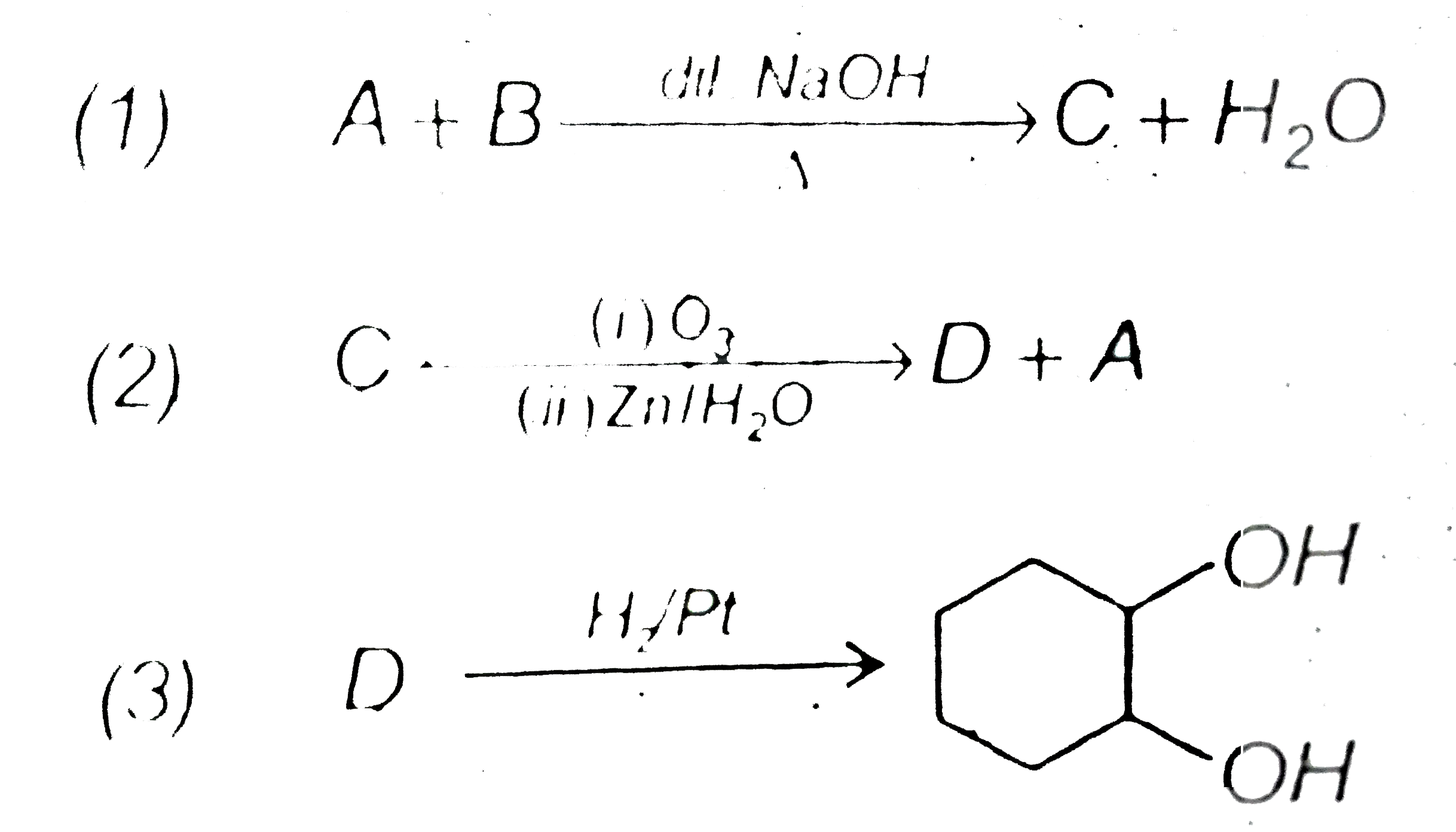Identify (A),(B),(C ) and (D) and example reactions .
(A) (green coloured salt)
(B) (redidish brown gas) +
(C ) (yellow ppt)
(C )
(A)
(B) [by chromyl-chloride4 rest of
(C ):
(D):
Topper's Solved these Questions
- BOOK - CENGAGE CHEMISTRYCHAPTER - QUALITATIVE INORGANIC SALT ANALYSISEXERCISE - Solved Example11videos
QUALITATIVE INORGANIC SALT ANALYSIS
- BOOK - CENGAGE CHEMISTRYCHAPTER - QUALITATIVE INORGANIC SALT ANALYSISEXERCISE - Exercises (Linked Comprehension)68videos
QUALITATIVE INORGANIC SALT ANALYSIS
- BOOK - CENGAGE CHEMISTRYCHAPTER - P-BLOCK GROUP 18 ELEMENTS - THE INERT GASESEXERCISE - Ex 5.1 (Objective)14videos
P-BLOCK GROUP 18 ELEMENTS - THE INERT GASES
- BOOK - CENGAGE CHEMISTRYCHAPTER - REDUCTION AND OXIDATION REACTION OF ORGANIC COMPOUNDSEXERCISE - SUBJECTIVE TYPE3videos
REDUCTION AND OXIDATION REACTION OF ORGANIC COMPOUNDS
Similar Questions
In the reactions,
K2Cr2O7+KCl+conc.H2SO4heat−−→ANaOH−−−→B.
'A' is reddish brown gas soluble in NaOH forming B. A and B areView Solutiona.(A) +KBr→ yellow ppt . (B)
(A) +conc.H2SO4Δ−−→ brown vapours intensifield with cu- turnings.
(B) dissolves in lypo forming a soluble complex (C ) what are (A),(B) and (C ) and explain their reactions ?
b. SO2−3 and SO2−4 both give while ppt with BaCI2 solution .How is SO2−3 detected in presence of SO2−4?
c. Na2B4O7.10H2O+conc.H2SO4Δ−−→(A)CH2OHΔ−−−−−→(B) idenity (A) and (B)
d. (A) +diiH2SO4Δ−−→gas(B)
Gas (B) turns K2Cr2O7/HΘ solution green Aq solution of (A) +BaCI2→ while ppt .(C )
Filltrate after removing (C) +Br2 water rarr while ppt dissolve in qammon ium acetate solution Example.View Solution
Knowledge Check
- Question 1 - Select One
Identify (B) and (D) in the following sequence of reactions:
H2C=CH2conc.H2SO4−−−−−−−→(A)H2O−−→Δ(B)PB3−−→(C)(D)−−→(H2C=CH2)ACH3OH and C2H5BrBC2H5HSO4 and alc. KOHCC2H5OH and alc. KOHDC2H5HSO4 and aq. KOH - Question 2 - Select One
The product D in the following reaction is ___________.
CH3ClKCN−−→(A)H2O−−→(B)NH3−−→(C)Δ−−→(D)ACH3CH2NH2BCH3CNCHCONH2DCH3CONH2 - Question 3 - Select One
The product D of the reaction CH3ClKCN−−→(A)H2O−−→(B)NH3−−→(C)Δ−−→(D) is
ACH3CH2NH2BCH3CNCHCONH2DCH3CONH2
a.(A) +KBr→ yellow ppt . (B)
(A) +conc.H2SO4Δ−−→ brown vapours intensifield with cu- turnings.
(B) dissolves in lypo forming a soluble complex (C ) what are (A),(B) and (C ) and explain their reactions ?
b. SO2−3 and SO2−4 both give while ppt with BaCI2 solution .How is SO2−3 detected in presence of SO2−4?
c. Na2B4O7.10H2O+conc.H2SO4Δ−−→(A)CH2OHΔ−−−−−→(B) idenity (A) and (B)
d. (A) +diiH2SO4Δ−−→gas(B)
Gas (B) turns K2Cr2O7/HΘ solution green Aq solution of (A) +BaCI2→ while ppt .(C )
Filltrate after removing (C) +Br2 water rarr while ppt dissolve in qammon ium acetate solution Example.View SolutionThe product D of the reaction CH3ClKCN−−→(A)H2O−−→(B)NH3−−→(C)Δ−−→(D) is
View SolutionColourless salt (A) gives apple- green flame with cone. HCI (A) on reaction with dil H2SO4 give light brown flame (D) turning KI -strach paper blue.
(A) +CH3COOH+K2CrO4→ yellow ppt (B)
(A) +H2SO4→(C)(white ppt)+(D)
(D) +CH3NH2+CH3OH+H2O+gas(E)
(E ) +MgΔ−−→(F)
(F) +H2O→NH3
Identify (A) to (F) and explain reaction.View SolutionIdentify A-D in the following reactions .

(1) A+BdilNaOH−−−−−→ΔC+H2O
(2) CdilNaOH−−−−−−−→(ii)Zn/H2OD+A
(3) View Solution
View SolutionIdentify A-D in the following reactions .

(1) A+BdilNaOH−−−−−→ΔC+H2O
(2) CdilNaOH−−−−−−−→(ii)Zn/H2OD+A
(3) View Solution
View Solution

